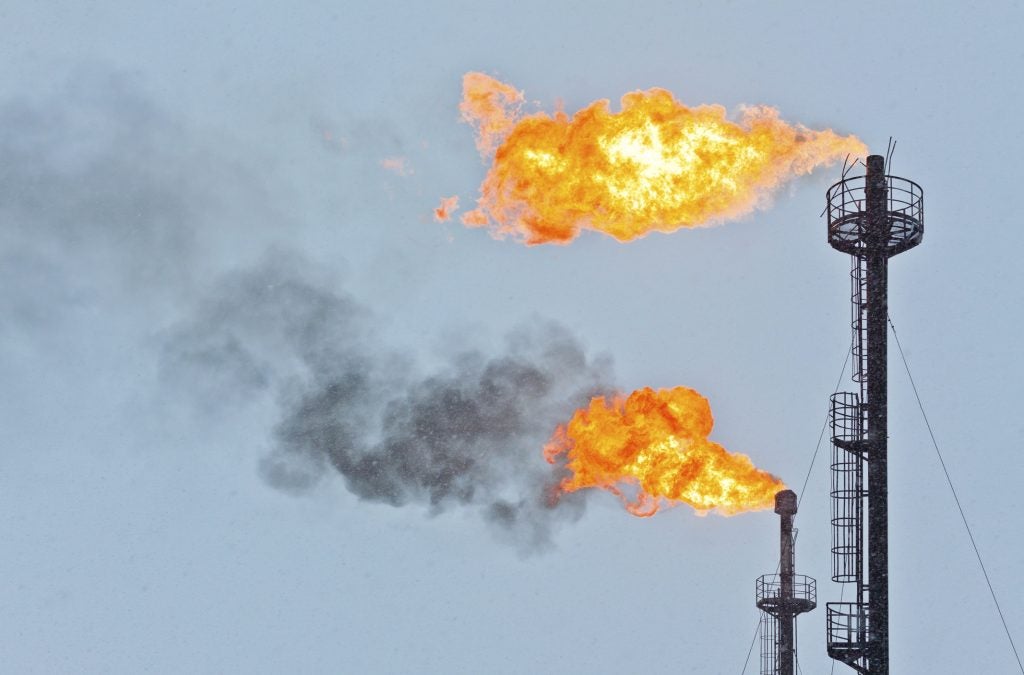 EPA is preparing to release proposed rules to cut oil and gas methane pollution from both new and existing facilities — one of the most critical and cost-effective actions we can take to immediately slow the rate of global warming and avoid the worst impacts of climate change.
EPA is preparing to release proposed rules to cut oil and gas methane pollution from both new and existing facilities — one of the most critical and cost-effective actions we can take to immediately slow the rate of global warming and avoid the worst impacts of climate change.
Recognizing the importance of this opportunity, yesterday, over 70 community, health, tribal and environmental organizations sent EPA a letter expressing strong support for its efforts to develop methane pollution safeguards and urging the agency to propose protective and comprehensive standards for new and existing sources.
By leveraging advanced technologies and ensuring meaningful coverage, the rules can secure the substantial, science-based pollution reductions needed to help address the climate crisis and to ensure healthy communities.
In his day-one executive order on climate, President Biden directed EPA to propose methane rules for oil and gas facilities by this fall. And this summer, Congress passed a bipartisan resolution reversing a Trump-era rollback of methane protections and reaffirming EPA’s obligation to reduce methane from both new and older sources in the oil and gas sector. The resolution garnered support from advocates and a broad swath of the oil and gas industry itself.
To achieve methane reductions consistent with the Biden administration’s climate goals, EPA’s proposals must be comprehensive and seize on new technological developments. The recently released Intergovernmental Panel on Climate Change (IPCC) Report underscores that swift action to reduce methane is needed to limit global temperature rise to 1.5°C, preventing dangerous climate impacts and protecting the most vulnerable populations.
As the science around the methane problem has progressed, so have the solutions. Innovations in methane mitigation tech coupled with smart policies have allowed major oil and gas producing states to successfully implement new approaches to tackle methane in recent years. The readily available and cost-effective solutions at hand, along with the broad support from stakeholders, create a strong foundation for EPA to adopt rules that curb pollution, cover all significant emission sources – without carve-outs – and create jobs.
Protective standards should include these key features:
- Comprehensive requirements to find and fix leaks. Equipment leaks and unintentional methane releases are a huge source of emissions. EPA standards have traditionally required ground-based monitoring, which remains crucial for finding smaller but widespread leaks. To enable faster detection and repair of “super-emitter” leaks, new standards can leverage advanced monitoring, like aerial surveys, which are cost-effective and highly efficient. In fact, EPA recently held a technology workshop where oil and gas operators, scientific researchers, and other experts shared information on the significant reductions that these new approaches could deliver. To achieve necessary emissions reductions, standards must apply comprehensively at both new and older facilities, including at the lower production wells that are responsible for an outsized share and substantial proportion of the sector’s total production emissions.
- Adopting zero-emitting technologies. As state standards in Colorado have shown, zero-emitting pneumatic devices are cost-effective, readily available, and can be deployed across the sector to achieve significant emission reductions at low cost.
- Ending routine flaring. Requiring operators to capture natural gas reduces significant amounts of pollution, generates revenue for operators, and is a common-sense step that EPA can and must take now, building on the examples of states like New Mexico and Colorado. Research has repeatedly shown that flaring is a major contributor to methane emissions and ending the routine practice can cost-effectively curb waste and climate emissions.
- Requiring best practices. Activities like liquids unloading and well-plugging that EPA has not previously regulated should be covered to reduce emissions and ensure operators employ responsible practices.
- Transparency. A transparent public process and easily accessible compliance data will be essential to the ultimate success and durability of these rules.
As EPA has engaged stakeholders throughout this process – through public listening sessions and workshops featuring an array of new developments in methane leak detection and mitigation technologies – community, environmental, public health and faith-based organizations have actively voiced support for protective rules. In addition, many industry groups and oil and gas companies have also expressed support for new standards given the commonsense and job-creating nature of methane reductions.
The momentum is behind EPA to propose protective, comprehensive standards that achieve deep reductions in methane and local air pollution and put the oil and gas industry on a path to reducing its methane emissions by up to 65% by 2025.
Meeting the climate crisis head on will require nothing less than EPA taking full advantage of the most commonsense and cost-effective measures in front of us. The Biden administration has made clear it intends to lead on climate while safeguarding Americans’ health and creating jobs. Curbing oil and gas methane pollution is a mission critical opportunity for meeting those goals that we can’t afford to pass up.
EDF Legal Fellow Edwin LaMair contributed to this post.









